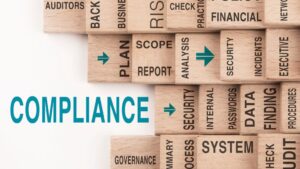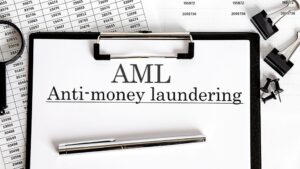The KYC process step 2 is the exploring of the customer’s identification information to identify the true identity of the customer and the beneficial owner.
As part of KYC process, exploring the customer’s identification information, to identify the true identity of the customer and the beneficial owner is a crucial activity. Different possible and reliable sources are explored to ensure that customer is not associated with any illegal activity or criminal or related group. This includes exploring media databases, internet searches to perform negative media searches, checking the names of customers from the negative lists, etc.
KYC Process Step 2: Explore
The purpose of exploring is to ensure that KYC objectives are met, which include:
The KYC process protects an organization from being used for money laundering / terrorist financing activities, which the customer may perform after getting onboarded by the organization, such as a financial institution.
KYC enables the organization to avoid the risk of onboarding the criminals such as money launderers or persons associated with criminals in any manner.
The KYC process is a mandatory duty that must be followed when a consumer contacts an organization, either physically or through internet portals, to create an account or receive services.
Information about beneficial owner is asked in case of legal entities and businesses, to identify the true owner of the account, who may not be on the front for identification and verification, at the time of account opening. A beneficial owner is a person who controls either directly or through any other person who directs the control of the account and is the person who owns the account and its activities.
As per AML and KYC regulatory requirements, every organization, before onboarding customers, must take reasonable steps to ascertain the true, accurate, and complete identity of the beneficial ownership structure and beneficial owners.
Where the organization, has reasonable grounds to believe that a person is or maybe its beneficial owner, the organization must ask in writing to such person requiring:
(a) To state whether he is a truly beneficial owner
(b) Confirm or correct any required particulars of such person that are included in the request in writing.
Organizations must keep a record of the required particulars of the declared and verified beneficial owners as the “record of beneficial owners”.
The information required from the beneficial owner may include the following:
In respect of a natural person:
(i) Full name, including any former names
(ii) Country of residence
(iii) Date of birth
(iv) Nationality
(v) Occupation
(vi) The date on which that person became a beneficial owner
(vii) The grounds on which that person is considered to be a beneficial owner
In respect of a person who is not a natural person:
(i) Registered name
(ii) Registered address
(iii) Registration number (or equivalent)
(iv) Country of registration
(v) The date on which that person became a beneficial owner
Final Thoughts
Exploring the customer’s identification information, to identify the true identity of the customer and the beneficial owner. Effective KYC prevents businesses from doing business with organizations or individuals engaged in illegal activity such as money laundering, terrorist financing, or corruption. It also enables financial institutions to gain a better understanding of their customers’ businesses, which can provide valuable insights.





